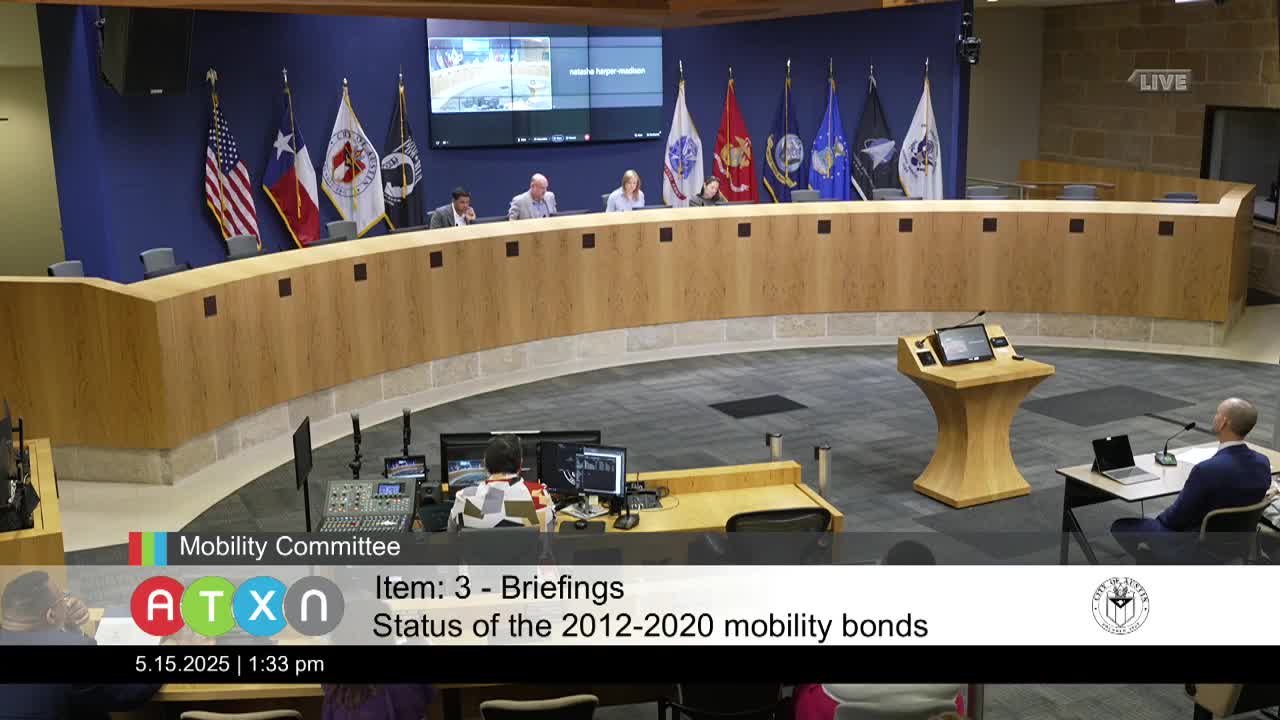Austin's 50 First Street Project Advances to Final Design Phase with $2 Million Funding
May 15, 2025 | Austin, Travis County, Texas
This article was created by AI summarizing key points discussed. AI makes mistakes, so for full details and context, please refer to the video of the full meeting. Please report any errors so we can fix them. Report an error »

The Austin Mobility Committee made significant strides in its recent meeting on May 15, 2025, focusing on key infrastructure projects aimed at enhancing the city's transportation landscape. A major highlight was the update on the 50 First Street project, which is currently in its final design phase. The project, which includes a complete street redesign with shared use paths and bikeways, is expected to wrap up by the end of the calendar year. Funding for the project is secured, with additional sources identified to cover any shortfalls for construction.
Committee members expressed satisfaction with the efficiency of the sidewalk program, noting that approximately 25 crews are actively working throughout the city. This program is projected to remain solvent through fiscal year 2027, thanks to diverse funding sources beyond bond funding. The committee acknowledged the challenges faced in urban trail projects, which are more complex due to environmental considerations. Currently, there are about $80 million worth of urban trails in design, although not all of the necessary capital for construction is secured.
The discussion also touched on the importance of including active transportation components in the upcoming 2026 bond, emphasizing the popularity and community benefits of urban trails for pedestrians and cyclists. The committee highlighted the successful reconstruction of Airport Boulevard, which has improved safety and accessibility for all road users.
As Austin continues to develop its transportation infrastructure, the committee's focus on efficient project execution and community-oriented design will play a crucial role in shaping a more accessible and safer environment for residents. The next steps will involve finalizing designs and securing funding to ensure these vital projects move forward.
Committee members expressed satisfaction with the efficiency of the sidewalk program, noting that approximately 25 crews are actively working throughout the city. This program is projected to remain solvent through fiscal year 2027, thanks to diverse funding sources beyond bond funding. The committee acknowledged the challenges faced in urban trail projects, which are more complex due to environmental considerations. Currently, there are about $80 million worth of urban trails in design, although not all of the necessary capital for construction is secured.
The discussion also touched on the importance of including active transportation components in the upcoming 2026 bond, emphasizing the popularity and community benefits of urban trails for pedestrians and cyclists. The committee highlighted the successful reconstruction of Airport Boulevard, which has improved safety and accessibility for all road users.
As Austin continues to develop its transportation infrastructure, the committee's focus on efficient project execution and community-oriented design will play a crucial role in shaping a more accessible and safer environment for residents. The next steps will involve finalizing designs and securing funding to ensure these vital projects move forward.
View full meeting
This article is based on a recent meeting—watch the full video and explore the complete transcript for deeper insights into the discussion.
View full meeting
